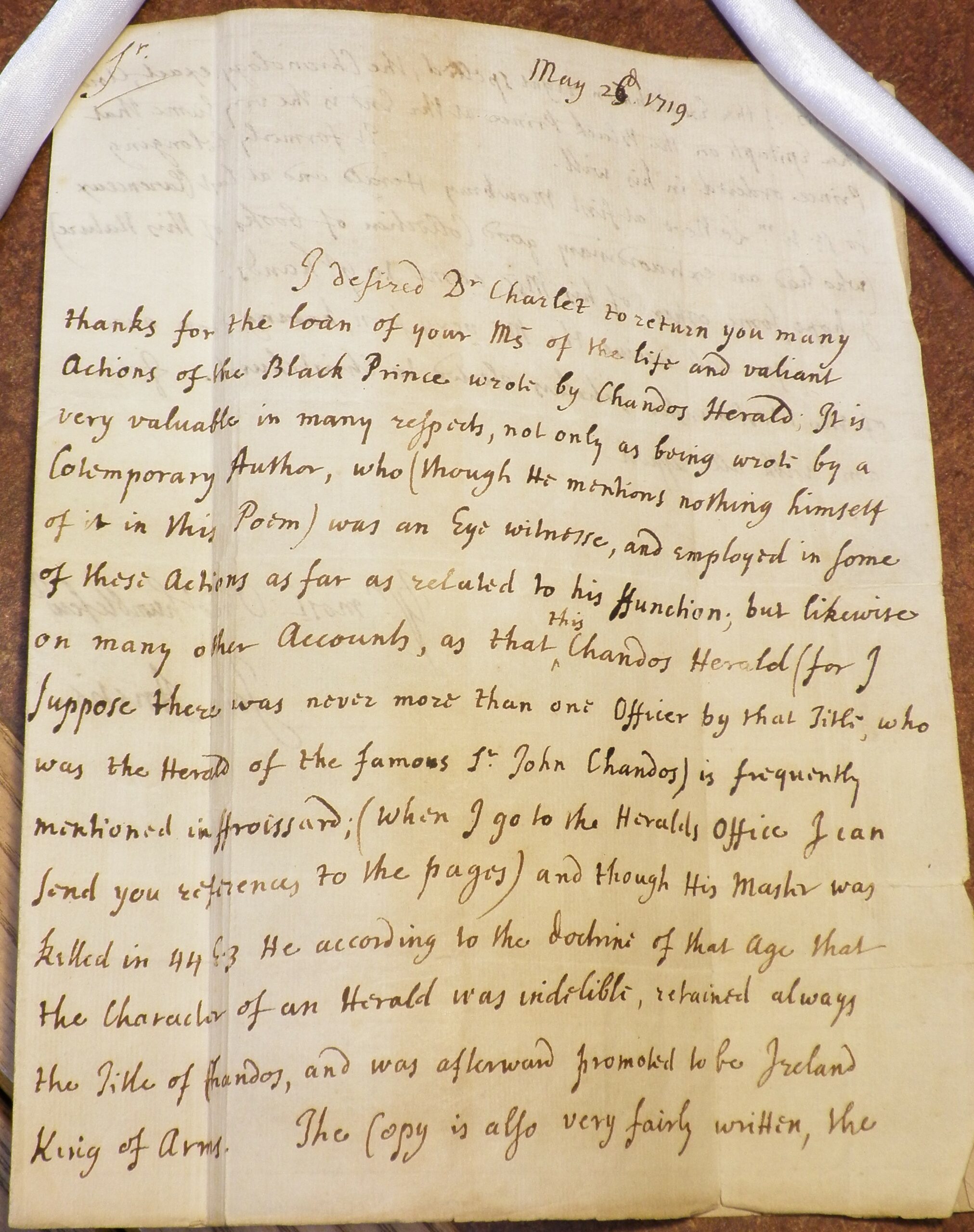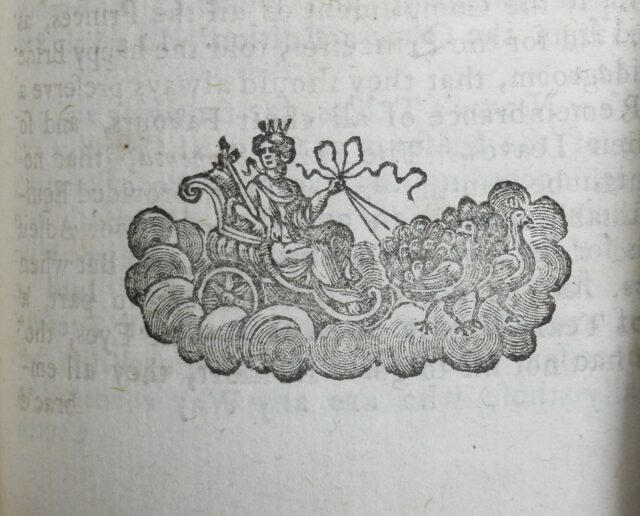Worcester MS 1: The Life of the Black Prince
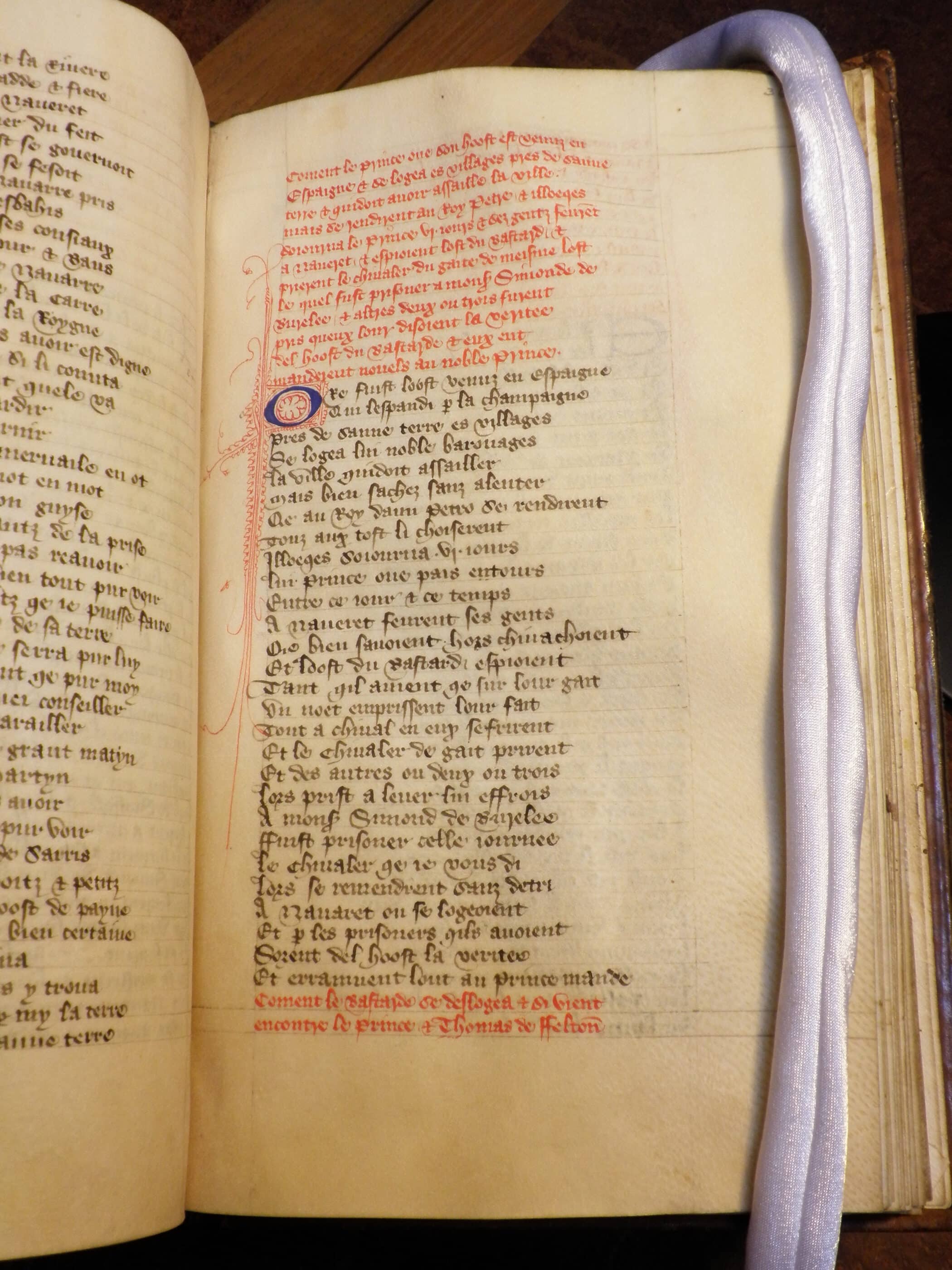
29th March 2018
Worcester MS 1: The Life of the Black Prince
‘Cy commence une partie de la vie et des faites
Darmes dune tresnoble Prince de Gales et Daqui-
taine quauoit a noun Edward eigne filitz au
Roy Edward tierce queux Dieux assoille.’
So begins Worcester MS 1, a ‘life and deeds of arms of the most noble prince of Wales and Aquitaine named Edward, son of king Edward the third, on whose soul may God have mercy’ (the translation is that of Barber, Life and campaigns, page 85). This manuscript dates to the late fourteenth century, not long after the composition of the poem it transmits. Written on vellum, ‘in an admirable hand’ (Mathew, The court of Richard II, page 115), with carefully rubricated headings, the volume is one of the earliest items in the Library’s collection.
Chandos Herald’s Vie du Prince Noir was composed in 1385 and celebrates the life of Edward of Woodstock (1330-1376), the Black Prince of chivalric legend, just nine years after his death. In Old French verse, it was written to commission (perhaps for John of Gaunt, but possibly even for Richard II, son of the Black Prince – see Barber, Life and campaigns, page 84) by the domestic herald of Sir John Chandos (d. 1370), a member of the prince’s inner circle. As such, his herald (the author of this poem) was well placed to witness events in the Black Prince’s life, events recounted in the poem: the Black Prince’s capture of the French King John II at Poitiers in 1356 (lines 1411 ff.); his marriage to Joan of Kent and rule in Gascony (lines 1585 ff.); and, in especially full detail, the Spanish campaigns of 1366-67, conducted to restore Pedro of Castile to his throne (lines 2515 ff.).
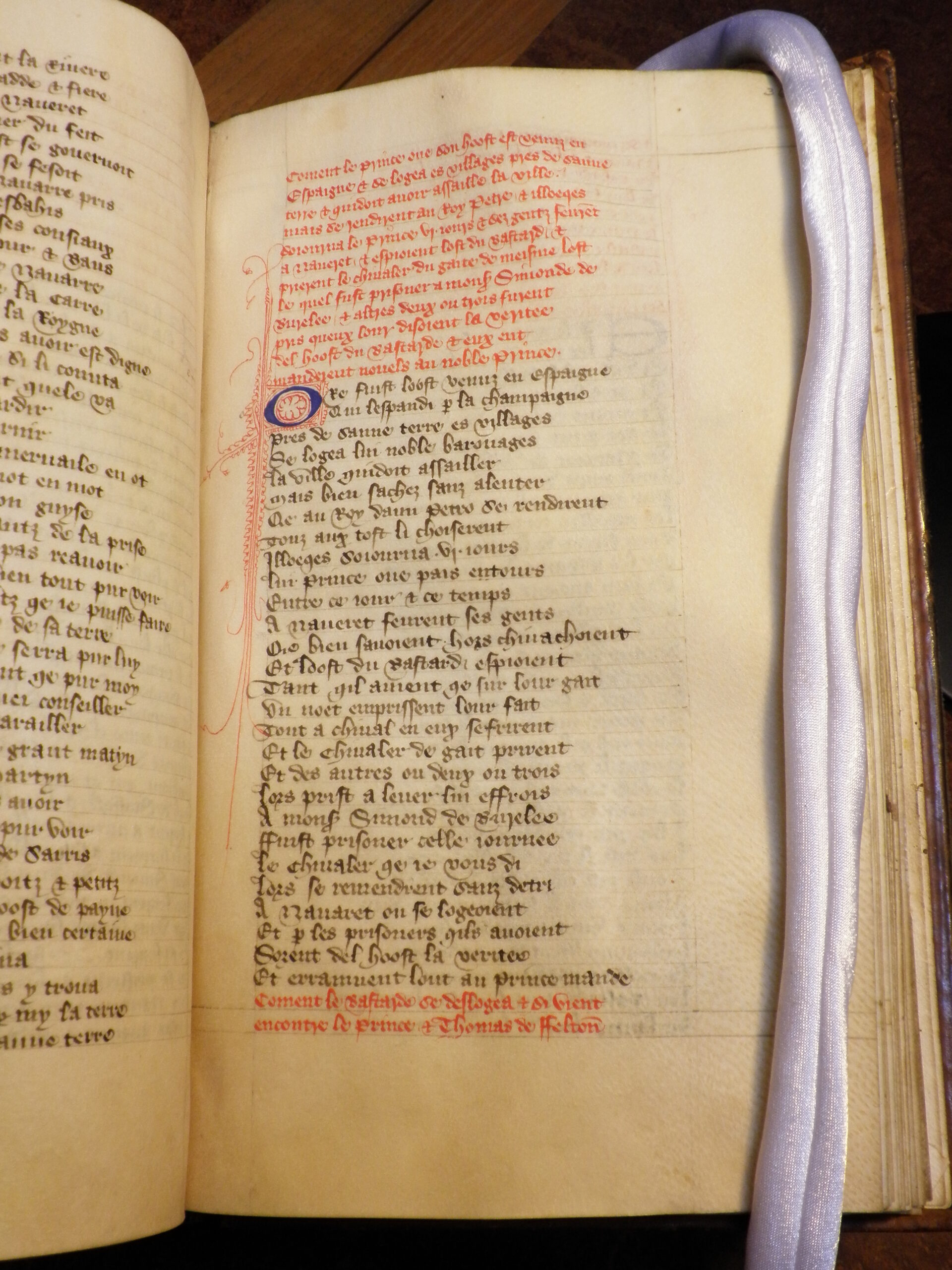
Folio 36r: the beginning of the Spanish campaign
The Chandos Herald is likely to have served in the Spanish campaigns, and thus provides eyewitness testimony. Froissart, the great narrative chronicler of the first half of the Hundred Years War, seems to have drawn directly on this poem for information (Barber, Life and campaigns, page 84) and it is rightly recognised as an important historical source (Pope and Lodge, Life of the Black Prince, page liv). Whilst the historical merits may outweigh its literary success, in terms of French literature it is ‘one of the few examples we have of French biographical writing on contemporary figures in the fourteenth century’ (Tyson, La vie du Prince Noir, page 1). The Herald, who was later made king-of-arms in England by Richard II, is thought to be of French origin, from the Hainault region (as was the Black Prince’s mother, Philippa of Hainault). By contrast, the manuscript’s scribe was not a French-speaker, so although a good copyist he provides a ‘miserable travesty of the Herald’s poem’ (Pope and Lodge, Life of the Black Prince, page xxxiv).
The manuscript came to the Library as part of the bequest of Dr George Clarke in 1736. In addition to Clarke’s usual monogram (in the top right-hand corner of the recto of the first leaf), it also bears witness to another earlier owner, William le Neve (bap. 1592, d. 1661), first Mowbray and then Clarencieux Herald: his signature is on the first and last leaves.
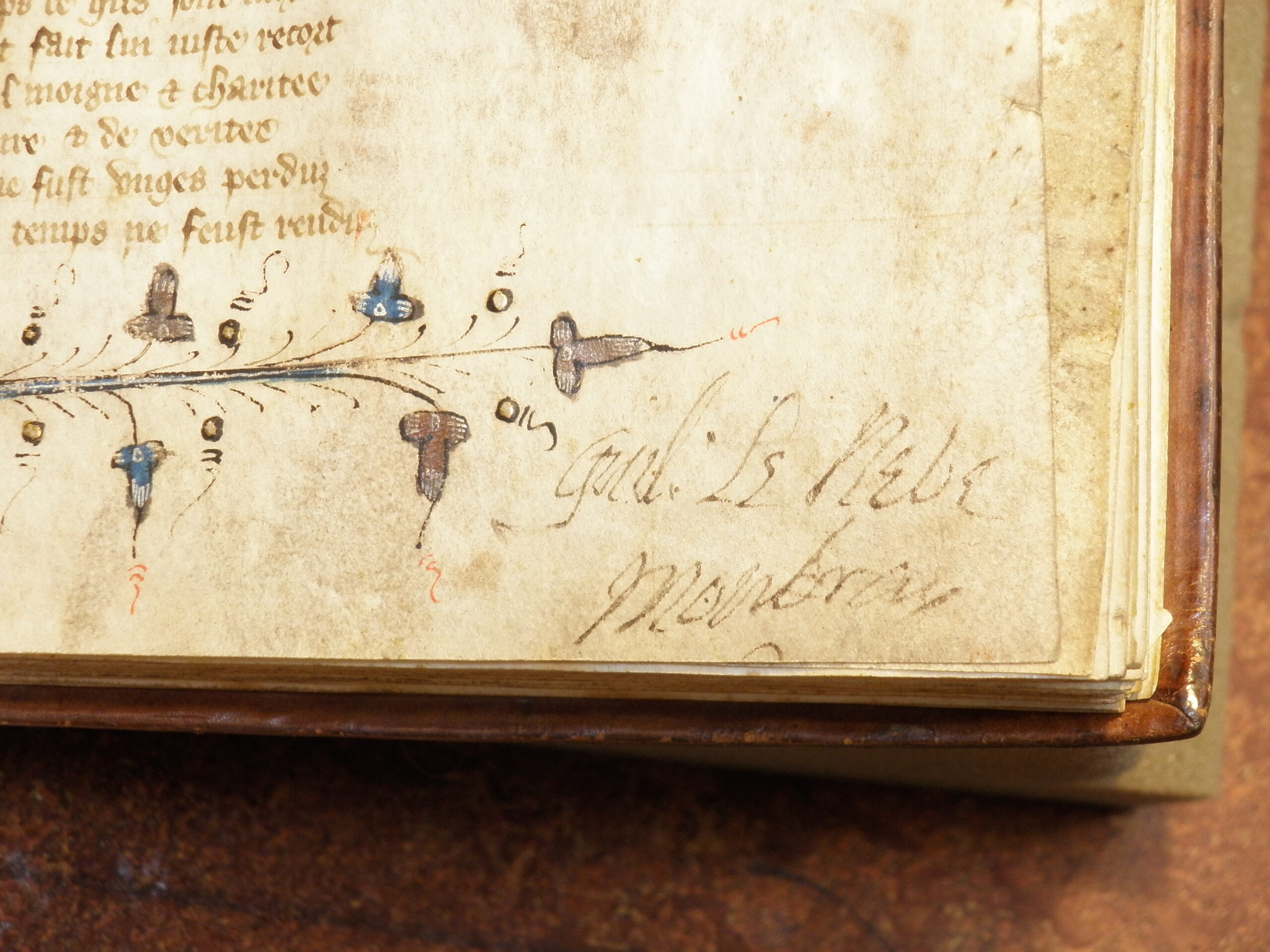

Nonetheless, the Worcester copy remains an exciting item in the Library’s collections. Over 600 years old, in a fine hand on vellum, still with beautiful illumination, it shows how early the view of the Black Prince as a heroic model of English chivalry was crystallised.
Mark Bainbridge
(Librarian)
Bibliography
Barber, R., Life and campaigns of the Black Prince (Woodbridge: Boydell, 1986)
Coxe, H. O., The Black Prince: an historical poem, written in French, by Chandos Herald (London: printed for the Roxburghe Club by W. Nicol, Shakespeare Press, 1842)
Mathew, G., The court of Richard II (London: John Murray, 1968)
Michel, F., Le Prince Noir: poème (London and Paris: Fotheringham, 1883)
Pope, M. K. and E. C. Lodge, Life of the Black Prince by the Herald of Sir John Chandos (Oxford: Clarendon Press, 1910)
Tyson, D., La vie du Prince Noir by Chandos Herald (Tübingen: Max Niemayer, 1975)












